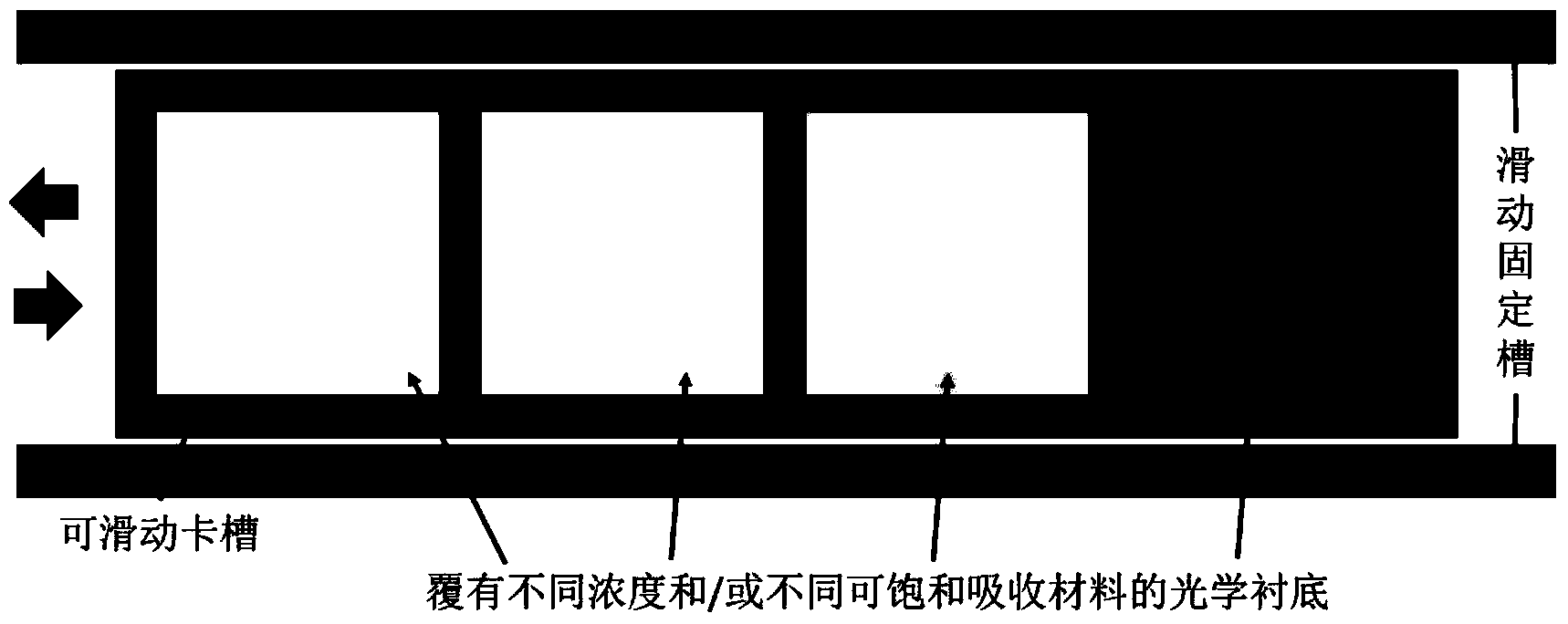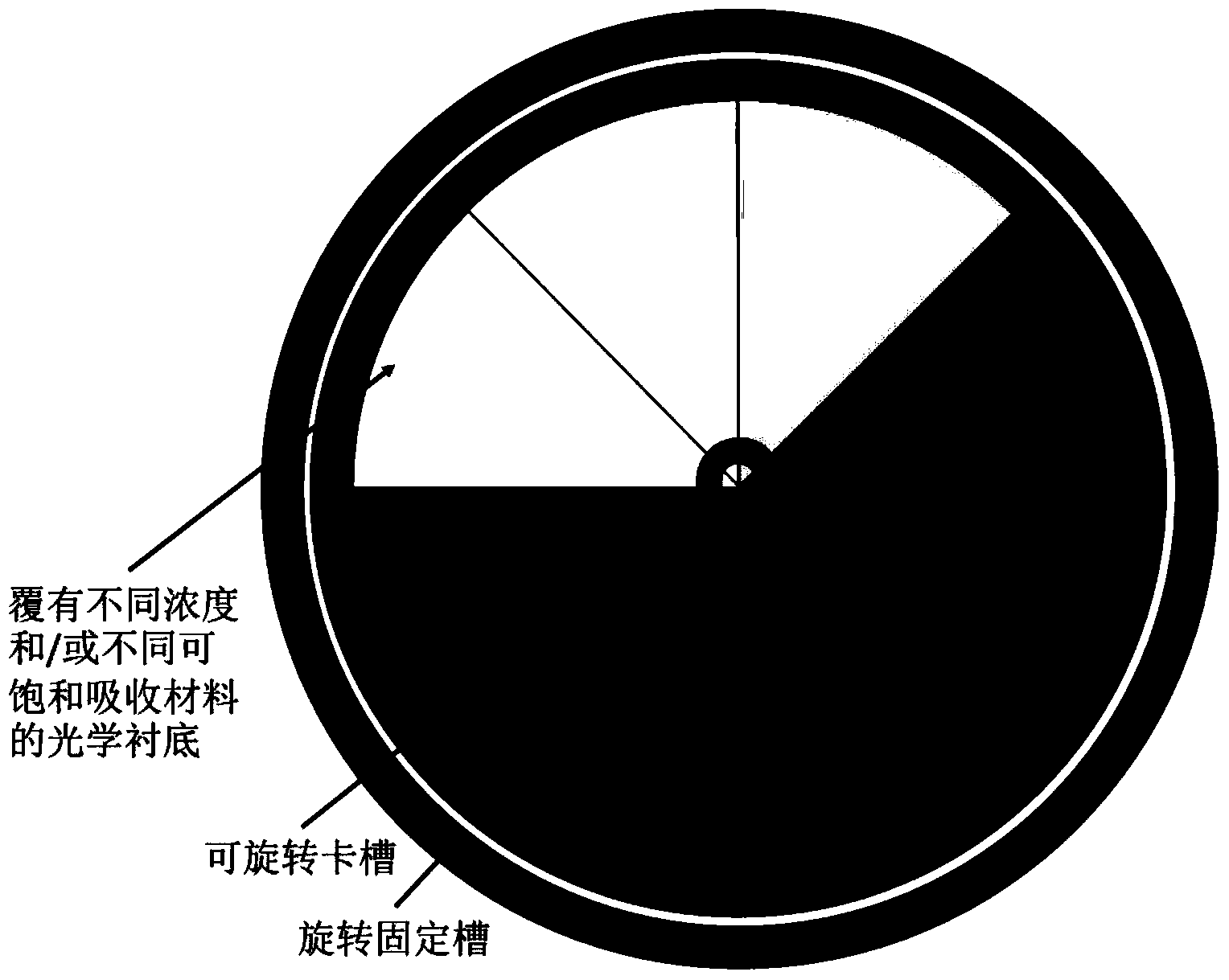Adjustable saturable absorbing device, production method of adjustable saturable absorbing device and application of adjustable saturable absorbing device in time domain output mode adjustable optical fiber pulse laser device
A technology of saturable absorption and pulsed lasers, which is applied in the field of nonlinear optics and lasers, can solve problems such as difficult coupling, low damage threshold, and limited spectral bandwidth, and achieve a wide range of operating wavelengths, adjustable operating modes, and stability high effect
- Summary
- Abstract
- Description
- Claims
- Application Information
AI Technical Summary
Problems solved by technology
Method used
Image
Examples
Embodiment 1
[0035] The high-density carbon nanotube array prepared by chemical vapor deposition (CVD) is drawn into a carbon nanotube film. The carbon nanotubes are multi-walled carbon nanotubes with a diameter of 5-10nm, and the film is directly deposited on several quartz optical substrates. Along the same direction, repeat the above deposition process, and deposit several quartz substrates 1 time, 5 times, 10 times, 25 times, etc., and saturable absorbing devices with different optical absorption characteristics can be prepared; several The quartz substrate is integrated on the slidable slot, and then the slidable slot is set on the sliding fixed slot to make a movable saturable absorbing device.
Embodiment 2
[0037] The CVD method (temperature 1000 o C, Monolayer graphene on copper foil prepared by mixing ethylene and hydrogen) was coated with a thin layer of polymethyl methacrylate (PMMA) as a support material. Utilize FCl 3 Chemically etch off the copper foil, and then attach the PMMA with graphene on the surface to the sapphire optical substrate, and finally use acetone to etch off the PMMA, and dry at room temperature for 2-4 hours to realize the transfer of single-layer graphene; repeat this The process can realize the transfer of different proportions and total layers of graphene and carbon nanotube films on different sapphire optical substrates.
Embodiment 3
[0039] Dissolve 5 mg of single-walled carbon nanotube (SWNTs) powder and 50 mg of sodium dodecylbenzenesulfonate (SDBS) in 10 mL of water, and disperse by ultrasonic (power 180W, temperature 8-10 o C) Treat for 120 minutes, centrifuge the obtained carbon nanotube dispersion (25000g, temperature 14 o C), treated for 120 minutes to obtain an aqueous solution of single-walled carbon nanotubes; 80 mg of graphite powder and 60 mg of sodium deoxycholate (SDC) were dissolved in 10 mL of water, and dispersed by ultrasonic (power 180W, temperature 8-10 o C) After processing for 240 minutes, centrifuge the obtained dispersion liquid containing single-layer graphene and few-layer graphene (25000g, temperature 14 oC ), treated for 60 minutes to obtain a graphene aqueous solution; PVA was dissolved in water with a mass percentage of 15%, and treated in a high-speed mixer (15000g, room temperature) for 10 minutes to form a PVA aqueous solution; the above three aqueous solutions were accord...
PUM
 Login to View More
Login to View More Abstract
Description
Claims
Application Information
 Login to View More
Login to View More - R&D
- Intellectual Property
- Life Sciences
- Materials
- Tech Scout
- Unparalleled Data Quality
- Higher Quality Content
- 60% Fewer Hallucinations
Browse by: Latest US Patents, China's latest patents, Technical Efficacy Thesaurus, Application Domain, Technology Topic, Popular Technical Reports.
© 2025 PatSnap. All rights reserved.Legal|Privacy policy|Modern Slavery Act Transparency Statement|Sitemap|About US| Contact US: help@patsnap.com



